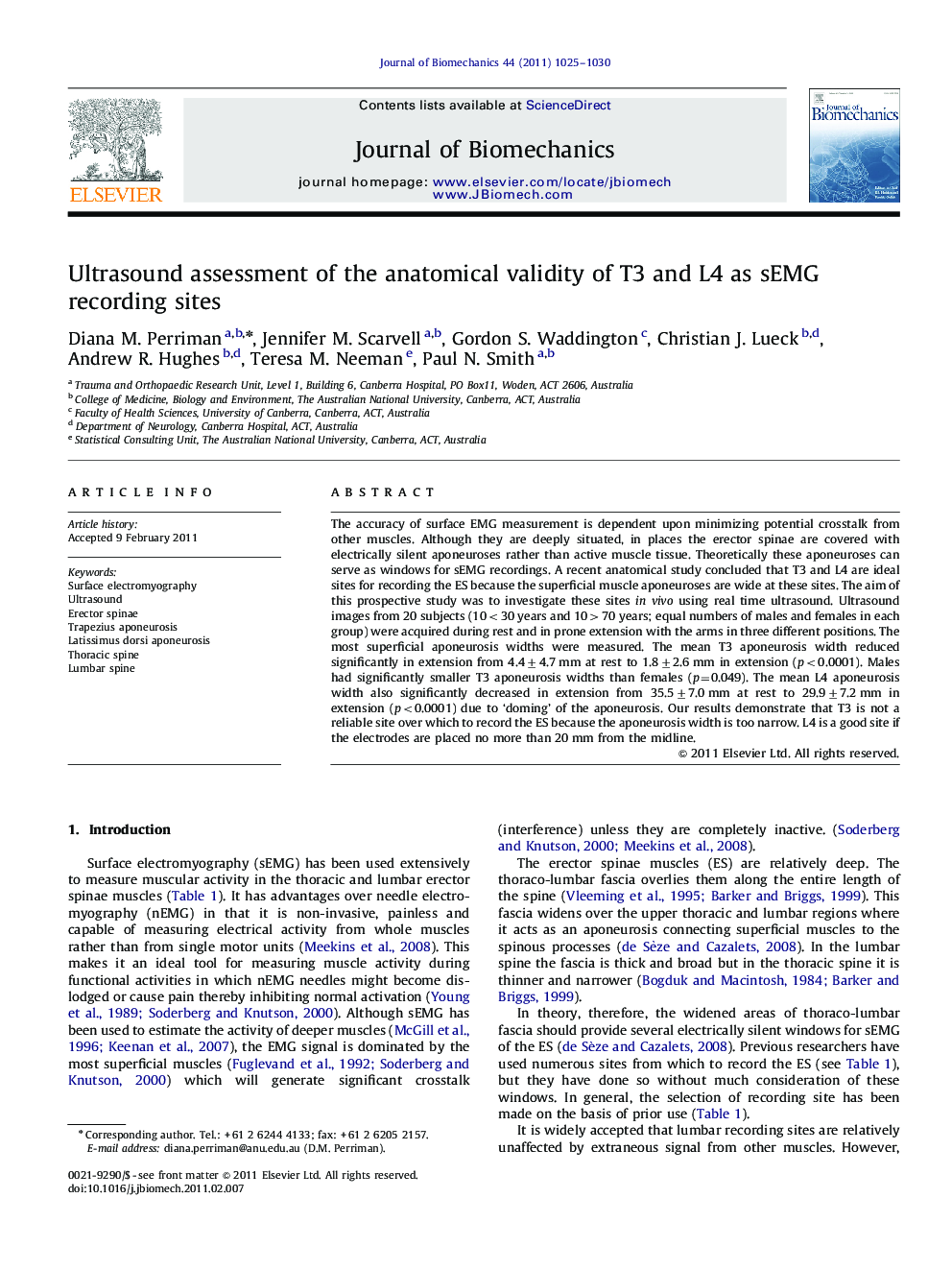| Article ID | Journal | Published Year | Pages | File Type |
|---|---|---|---|---|
| 10433351 | Journal of Biomechanics | 2011 | 6 Pages |
Abstract
The accuracy of surface EMG measurement is dependent upon minimizing potential crosstalk from other muscles. Although they are deeply situated, in places the erector spinae are covered with electrically silent aponeuroses rather than active muscle tissue. Theoretically these aponeuroses can serve as windows for sEMG recordings. A recent anatomical study concluded that T3 and L4 are ideal sites for recording the ES because the superficial muscle aponeuroses are wide at these sites. The aim of this prospective study was to investigate these sites in vivo using real time ultrasound. Ultrasound images from 20 subjects (10<30 years and 10>70 years; equal numbers of males and females in each group) were acquired during rest and in prone extension with the arms in three different positions. The most superficial aponeurosis widths were measured. The mean T3 aponeurosis width reduced significantly in extension from 4.4±4.7 mm at rest to 1.8±2.6 mm in extension (p<0.0001). Males had significantly smaller T3 aponeurosis widths than females (p=0.049). The mean L4 aponeurosis width also significantly decreased in extension from 35.5±7.0 mm at rest to 29.9±7.2 mm in extension (p<0.0001) due to 'doming' of the aponeurosis. Our results demonstrate that T3 is not a reliable site over which to record the ES because the aponeurosis width is too narrow. L4 is a good site if the electrodes are placed no more than 20 mm from the midline.
Related Topics
Physical Sciences and Engineering
Engineering
Biomedical Engineering
Authors
Diana M. Perriman, Jennifer M. Scarvell, Gordon S. Waddington, Christian J. Lueck, Andrew R. Hughes, Teresa M. Neeman, Paul N. Smith,
